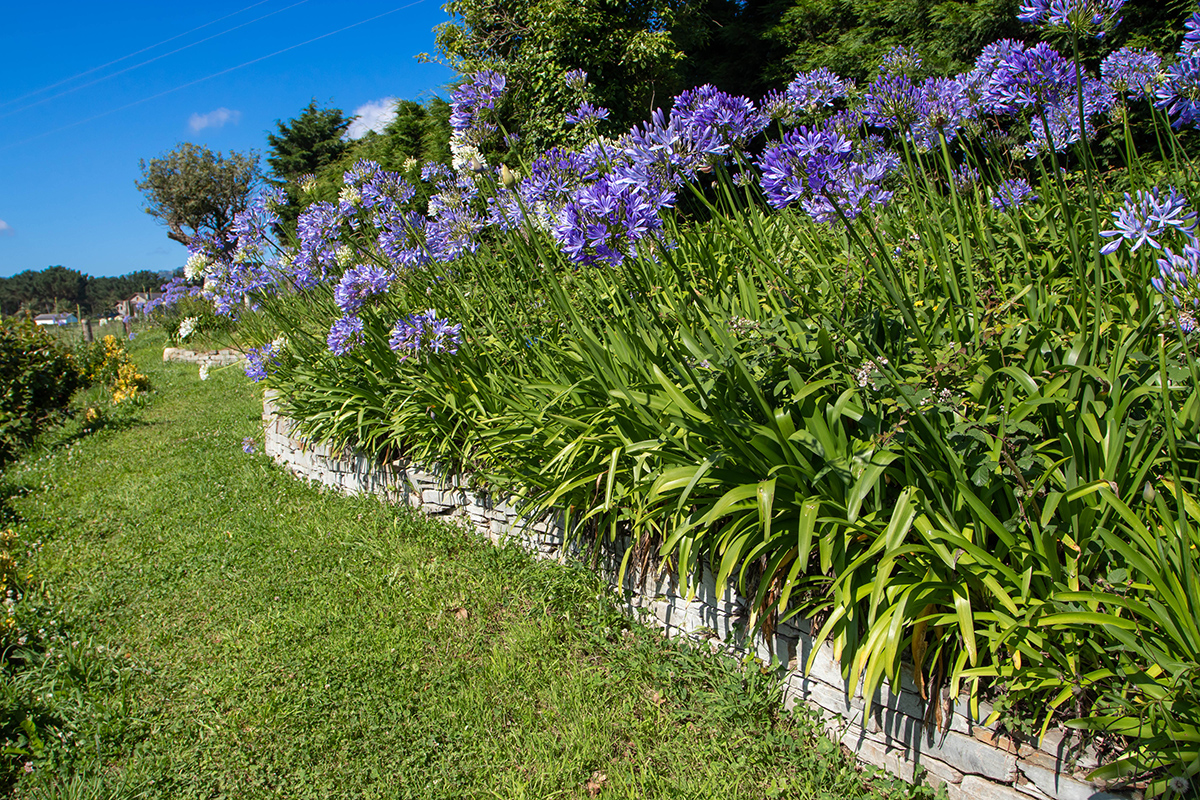Agapanthus Varieties: Choosing the most effective for Your Landscape
Agapanthus Varieties: Choosing the most effective for Your Landscape
Blog Article
Understanding the Art of Agapanthus Treatment: Essential Steps for Healthy Development and Vivid Blooms
In the realm of gardening, the cultivation of agapanthus stands as a rewarding undertaking for those who seek to support these sophisticated blooming plants. From choosing the best selection to grasping pruning strategies, the trip in the direction of cultivating growing agapanthus plants is multifaceted and holds the essential to opening the full capacity of these botanical treasures.

Choosing the Right Agapanthus Selection

When choosing the best Agapanthus selection for your yard, think about factors such as climate viability, blossom shade, and development routine. Furthermore, take into consideration the climate in your region to make sure the Agapanthus selection you select can flourish in your specific conditions. Recognizing the growth habit of various Agapanthus ranges is important for correct placement within your yard.
Ideal Growing Conditions
Thinking about the optimal environmental requirements is crucial for effective Agapanthus growing. Agapanthus prospers in well-draining soil with a slightly acidic to neutral pH level. When growing, pick a place that gets complete sunshine to partial shade. In hotter environments, supplying some mid-day color can protect against scorching of the fallen leaves. Agapanthus plants are sensitive to cold temperature levels and ought to be shielded from frost during winter months.
To make sure healthy growth and vibrant blooms, plant Agapanthus bulbs at a depth of concerning 2-4 inches and area them 8-12 inches apart. Including natural matter, such as compost, to the dirt can enhance water drainage and fertility, advertising durable origin advancement. Mulching around the base of the plants helps retain dampness and subdues weed development. Routine watering is essential, particularly during the growing period, to keep the soil continually damp yet not soaked.
Watering and Feeding Tips
Keeping appropriate wetness degrees and supplying necessary nutrients are essential elements in the treatment regimen for Agapanthus plants. When it concerns watering Agapanthus, it is essential to strike an equilibrium. These plants prefer continually damp dirt but are vulnerable to root rot if overwatered. During the expanding period, water deeply as soon as a week, making sure the dirt is well-draining to protect against waterlogging. In hotter environments or throughout periods of dry spell, more constant watering may be essential to maintain the soil equally moist. However, decrease watering in the winter months to stop water logged conditions.
Fertilizing Agapanthus is essential for advertising healthy growth and prolific blooms. Use a well balanced plant food, such as a 10-10-10 formula, in the very early springtime as brand-new development arises. By complying with these watering and fertilizing ideas, you can guarantee your Agapanthus plants thrive and produce vivid, long-lasting flowers.
Trimming Methods for Agapanthus
Trimming Agapanthus plants at the appropriate times and with appropriate methods is click over here now vital for preserving their health and advertising optimum development and blooming. The ideal time to prune Agapanthus is in late winter season or very early springtime before new development arises. Beginning by eliminating any type of yellowing or dead fallen leaves near the base of the plant. Cut them as short as feasible without damaging the arising shoots.
Deadheading invested blossoms can also reroute the plant's power right into producing even more blossoms instead than establishing seeds. If you want to gather seeds for breeding, leave some blossoms to mature and completely dry on the plant.
Remember to use clean, sharp tools to make exact cuts and decrease the threat of introducing diseases. Agapanthus. Regular pruning will certainly assist maintain your Agapanthus looking cool and healthy and balanced while ensuring an abundant display of beautiful flowers
Dealing With Usual Parasites and Diseases
After ensuring appropriate pruning techniques for Agapanthus, it is necessary to resolve common pests and click this illness that can affect the health and wellness and vigor of these plants. Agapanthus plants are normally sturdy yet can still succumb to certain problems. One common pest that influences Agapanthus is the Agapanthus gall midge. This small, orange fly lays its eggs in the foliage, resulting in distorted growth and flower buds that fall short to open up. To combat this pest, prune and ruin any kind of afflicted her latest blog plant components and think about using insecticidal soap.
Another typical concern is fungal fallen leave place, which offers as dark sores on the fallen leaves. To avoid fungal diseases, make certain good air blood circulation around the plants, stay clear of overhanging watering, and eliminate any contaminated fallen leaves quickly. Additionally, Agapanthus plants can experience origin rot if they are planted in improperly draining pipes soil. To stop this, plant Agapanthus in well-draining dirt and avoid overwatering. By being vigilant and taking timely action against conditions and bugs, you can help your Agapanthus plants flourish and produce vivid blossoms.

Verdict
Finally, mastering the art of agapanthus care entails picking the appropriate variety, offering excellent growing conditions, proper watering and fertilizing, ideal pruning strategies, and dealing with typical bugs and conditions. By adhering to these necessary steps, you can make sure healthy growth and vivid blossoms for your agapanthus plants. Bear in mind to frequently monitor and maintain your plants to advertise their overall well-being and longevity.
To make sure healthy development and lively flowers, plant Agapanthus light bulbs at a deepness of regarding 2-4 inches and space them 8-12 inches apart. By adhering to these watering and fertilizing ideas, you can guarantee your Agapanthus plants flourish and produce vibrant, resilient blossoms.
One typical pest that influences Agapanthus is the Agapanthus gall midge. Furthermore, Agapanthus plants can endure from origin rot if they are grown in poorly draining pipes dirt. By complying with these crucial steps, you can ensure healthy development and vivid flowers for your agapanthus plants.
Report this page